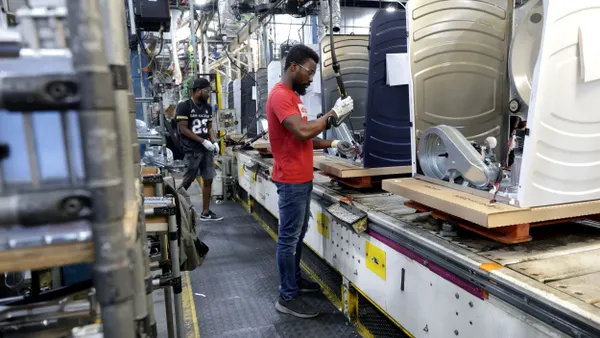Dive Brief:
- According to a recent study from The Bridgespan Group, and reported by the Harvard Business Review, just 30% of open C-suite jobs within nonprofits during the past two years were filled by an internal candidate (the for-profit rate is 60%) - and just under half their replacements came from other nonprofits.
- This trend means potentially "significant financial and productivity cost" because onboarding an external hire can cost up to twice the departing executive’s salary, and time-to-hire is double compared to an internal hire, says HBR.
- The survey of more than 400 nonprofit C-suite executives, which also included interviews, also found that one in four C-suite leaders left her or his position, and nearly as many reported that they planned to do so in the next two years. Meanwhile 44% of their replacements came from other nonprofits.
Dive Insight:
If you project that data over the next eight years, the article says, the nonprofit sector could need to replace the equivalent of every existing C-suite position, creating "a case of leadership musical chairs."
Why are nonprofit leaders abandoning ship so easily? Survey respondents offered several factors, including low compensation (57%) and frustration with a lack of professional development opportunities (50%).
One solution suggested may be to offer both "stretch opportunities and mentorship" to employees. For example, education crowdfunder DonorsChoose.org, which finances classroom-based projects, encourages senior executives to take on increasing responsibilities. One executive started as VP for operations but then took on HR duties as well, and was promoted to COO within two years.
The article goes on to cite several other success stories in how some nonprofits have been able to reduce C-suite turnover, adding that even smaller organizations can implement effective professional development policies. The research shows that skills development can often compensate for lack of upward trajectory.
According to the HBR article, innovating nonprofit organizations should learn how to "stretch and mentor employees into the next generation of leaders tackling society’s toughest challenges."












